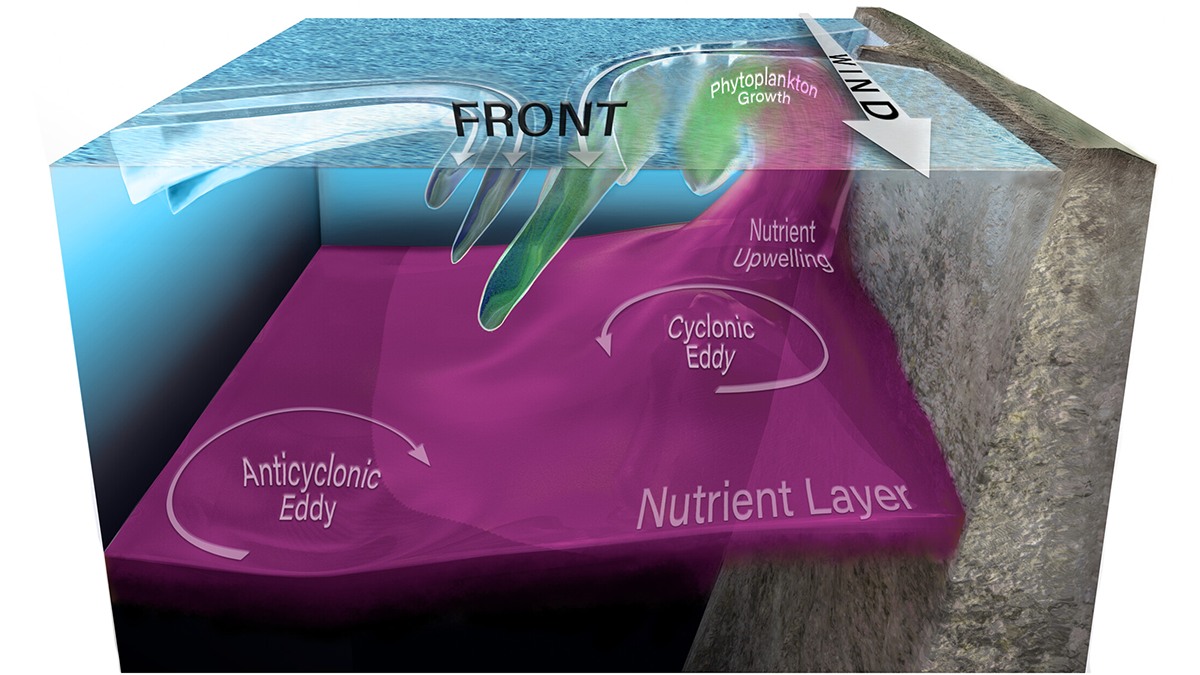Editors’ Highlights are summaries of recent papers by AGU’s journal editors.
Source: Journal of Geophysical Research: Oceans
It is generally assumed that phytoplankton grows to high concentrations within ocean fronts. However, a long-standing question is whether phytoplankton could also be carried to the front from somewhere else.
Gangrade and Franks [2023] conducted zigzag tow-yo observations in two different surveys three weeks apart offshore of Point Conception, California, United States. They observed phytoplankton patches at the ocean front which, at first glance, looked alike. However, by comparing the in-situ tow-yo observation data with satellite data, they found that the phytoplankton patches formed from two different sites of coastal upwelling, where nutrients from deep in the ocean rise to the surface. This finding confirms that, rather than generating phytoplankton, ocean fronts act more as a conduit.
The results of this study may have important implications. The authors suggest that more attention should be paid to the biogeochemical properties at ocean fronts in highly dynamic upwelling systems, especially to frontal variations in space and time.
Citation: Gangrade, S., & Franks, P. J. S. (2023). Phytoplankton patches at oceanic fronts are linked to coastal upwelling pulses: Observations and implications in the California Current System. Journal of Geophysical Research: Oceans, 128, e2022JC019095. https://doi.org/10.1029/2022JC019095
—Takeyoshi Nagai, Editor, JGR: Oceans

